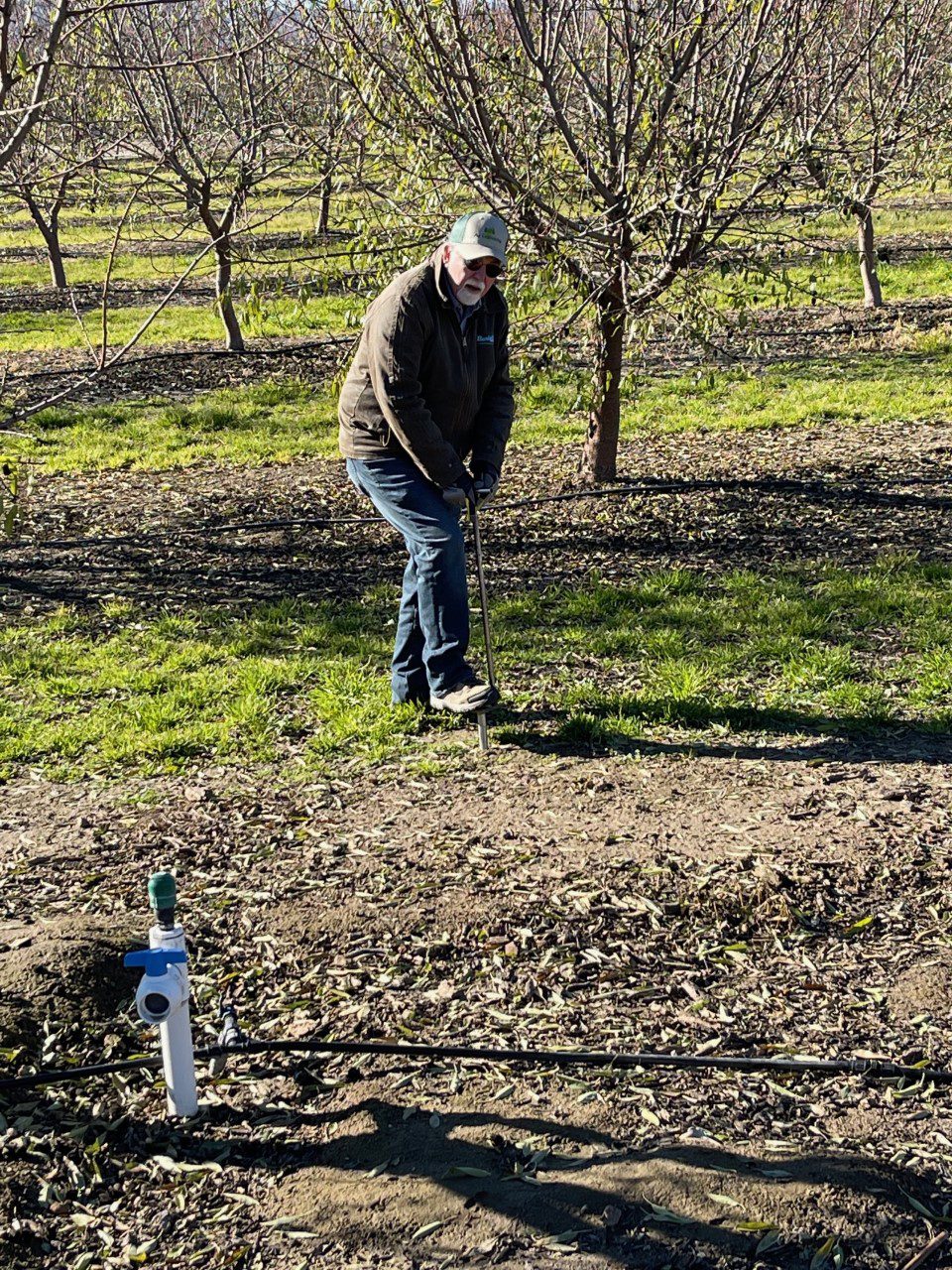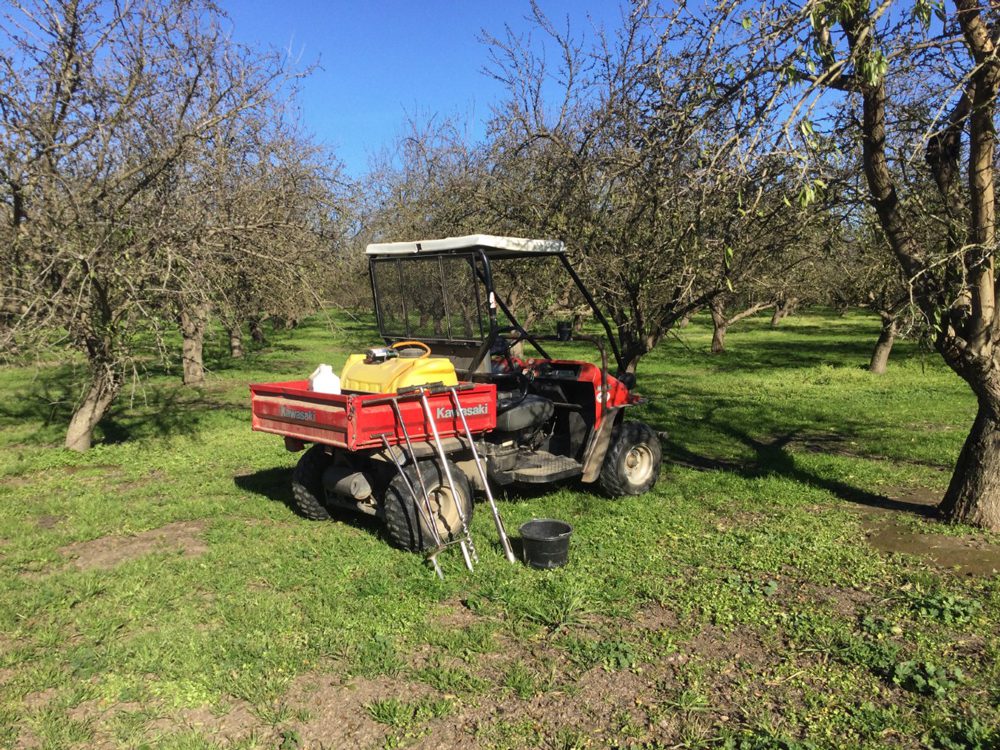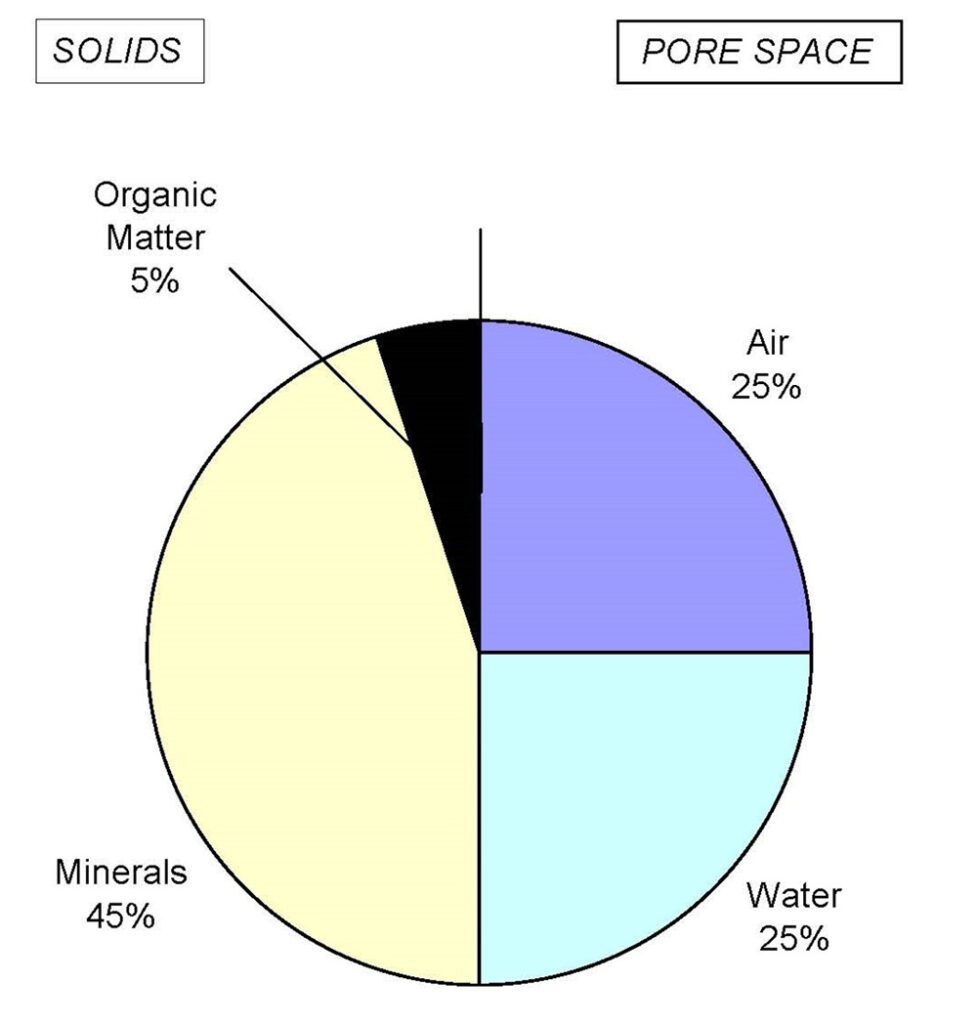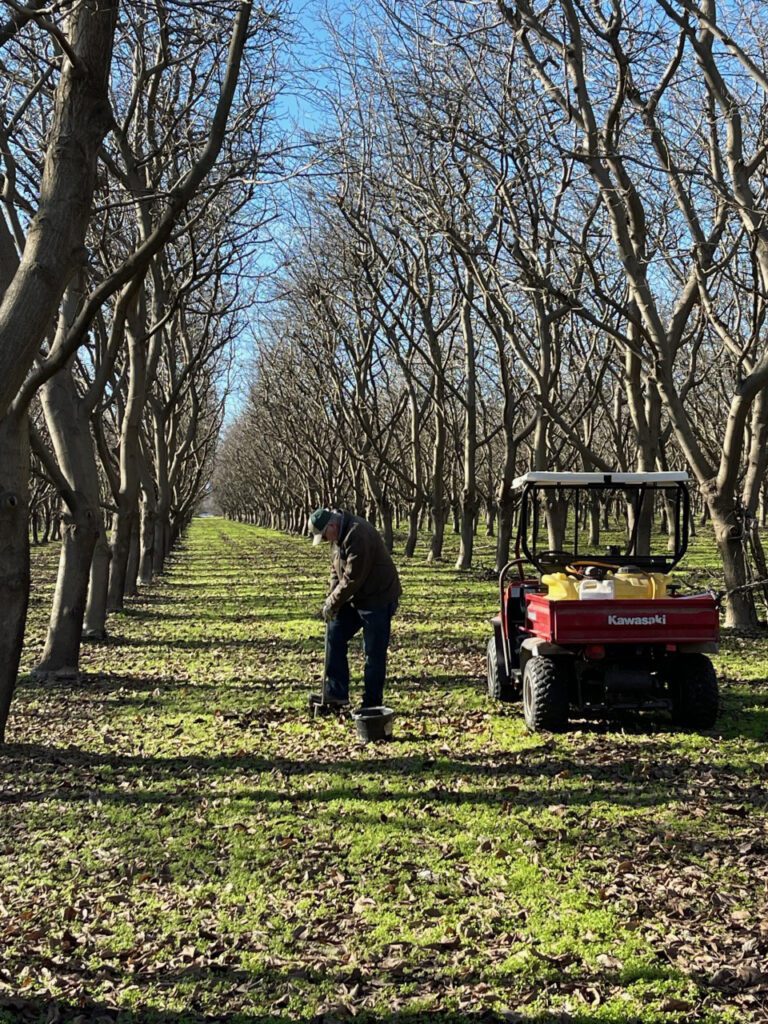
Wherever trees are being grown, no matter what kind they may be, there are specific considerations that can make great differences in terms of growth and production.
The first consideration about fertility for aptly growing trees of any type should be that you can correctly manage only those needs you can correctly measure. Needed measurements for growing trees can involve several different aspects for the best growth and production, including climate and other environmental factors as well as fertility to help determine growth and yield potential.
Trees will all grow the best in an ideal environment. That will vary depending on the circumstances required, the first requirement being whether they can withstand the climatic conditions (tropical, temperate or frigid areas) as well as conditions of moisture or drought, extreme heat or cold, or somewhere in between.
Apples provide an example as a tree crop considered to need a colder climate because they must shed their leaves after producing each crop in order to set another crop. Yet, once it was determined that the requirement was not cooler temperatures but shedding the old leaves once the crop was made in order to grow new leaves to set and adequately supply nutrients for a new crop, with that information and proper fertility, excellent crops of apples are now being grown in climates where frost is not sufficient to kill the leaves after the crop is harvested.
Measure First
Certain points to consider may seem like such simple and obvious statements to “veteran” growers, but without the ability to measure temperature and water needs, how can growing trees be managed properly?
The same is true concerning the fertility requirements for growing tree crops. There is a baseline of needed fertility that can be defined and measured for all tree crops. Once the baseline requirements have been met, the specifics that provide the fine-tuning for optimal conditions for growth and production can be adequately and most economically met.
For example, do pistachios that will grow and produce under dry conditions on less fertile soils truly require those conditions, or under more ideal conditions, do they possess an even greater yield potential?
Building and maintaining the basic requirements of soil fertility provides the optimal keys for growth and production of all types of tree crops. The true baseline of required nutrients can be measured by soil tests. Even when correctly taken, the numbers reported on soil tests can vary significantly from one lab to another. But for growers having good field experience, a detailed soil analysis in-hand will show how to determine what is best. How to obtain the most profitable results can only come by determining the measured needs of each soil to correctly supply what makes the most difference for the growth and production of each specific tree crop.
Initial Considerations
What is it about fertility that most helps trees perform at their best? In other words, what should be the first consideration in terms of soil fertility and fertilization that would be best for growing trees?
A good place to start is by asking what the basic needs of all life are, including trees. All life needs a source of nutrients, and in the case of trees, those should come principally and most economically through the roots. And the basic needs for life itself are also the basic needs for the roots of the trees.
What are the basic needs for life? Shelter, food, water and air. The same is true for the roots of trees. But of these four, which matters most in order to stay alive? Whether for life in general or for trees, shelter is something that would normally be least required. In other words, life could likely continue the longest without it. The need for food (nutrients) would likely be more limiting in most circumstances. But life can certainly last longer without food than water. And air is the most critical of these four for all life.
The soil where the trees are growing must sufficiently provide all four of these needs for the benefit of the roots to then provide sufficient nutriment for each tree. How does that happen? The soil with the best physical structure provides the most ideal environment for the life in the soil which serves to support the trees via its root system.

The ideal soil contains measured proportions of minerals in specified amounts, equal amounts of air space and water and a reasonable amount of organic matter or, more specifically, humus (Figure 1, see page 39.)
These conditions are not constant as soils will get wet from moisture, dry out during drought, pack down from heavy traffic, etc. But these are the ideal levels that can help make the most difference when all variable conditions are most favorable. This should be the physical condition the soil has the best ability to revert to when all needs that are most substantial for growth are being correctly measured and supplied.

And the key that most often fails to be met that negatively affects the ideal conditions is correcting the required baseline nutrient levels in each soil. Only then will the soil contain the nutrients which provide the best ability for restoring what is recognized as the ideal soil for growing trees and any other types of crops or plants.
Secondary Elements Crucial
The keys to growing the best crop on poor soils are the primary elements: nitrogen, phosphate and potassium, plus the needed sulfur for plant growth. But the keys to building the best soil conditions are the use of th
e so-called secondary elements, principally calcium and magnesium, along with sulfur if severe excesses must be dealt with
in the soil. This is most often the part that is sorely neglected.
Any workable nutrient program must be based on the direction each grower determines helps to best accomplish the desired goals. That direction usually is one of two possible choices: What does the land need in terms of soil nutrients to produce at its best, or what does the crop require to provide enough production to be most profitable using the fertilizer budget at-hand based on nutrient needs shown by testing the soil?

The first possibility will always make the most difference, especially if employed soon enough on land that will go to newly planted trees. Still, most fertility programs focus on the latter and thus never reach the optimum point where each soil will fully produce at its best potential level. That can only happen when all excesses and deficiencies have been eliminated. Most growers’ expectations are satisfied with results long before that point can be achieved. And only those growers that possess or build such soils, which can be shown when properly analyzed, will ever come to realize the maximum capabilities of supplying not just minimal but excellent levels of even the most critical trace elements as soil nutrients to optimize both growth and production.
An important point to remember here is that trace elements, or micronutrients, only give the best results when the primary and secondary elements have been adequately supplied to each soil. In many groves and orchards, money is being spent on providing or building up micronutrients that will give no additional response until other more limiting factors are eliminated. Growers should only concentrate on the required minimal amounts of each micronutrient until both the primary and secondary needs of the soil are adequately met.
Even then, all tree crops do not respond equally to added amounts of micronutrients. For example, English walnuts require over twice as much manganese as black walnuts and almost ten times more than California walnuts.
Those growers who learn to understand the baseline of soil nutrient needs, that is, the amounts needed to provide the bare minimum of each nutrient to accomplish good growth and production, have the foundation on which to build and meet the requirements for soils to grow more leaf, the strongest wood and the highest production capabilities. Such information is what determines top potential for growing the best trees. And only those who monitor their soils to be sure that content of nutrients is maintained are destined to build and assure consistently high yields and quality.
Test and Maintain Soils
Once accomplished, due to the higher quantities being taken off, unless soils that provide excellent yields are then continually maintained to meet the standards for those high production levels, they will soon lose that top potential, which results in a decline of both excellent quality and production levels.
This approach to fertility is designed to help define those foundational concepts that are needed to grow the best trees of any type. Furthermore, building and maintaining those foundational levels provides the basic key to more successful improvements and helps avoid the “guesswork” that is so often used for tree crop production.
Test this for yourself. Check areas of poor, good and best production and compare nutrient levels. A proper soil analysis should not just provide a set of numbers and fertilizer recommendations; it should also provide growers with the correct nutrient guidelines, and the best producing areas should be closest to those guidelines and the worst the furthest away. As those not doing as well are brought closer into line with the ideal, that should be when better results are becoming more and more evident.
Growers need to know what works, not what they hear will or will not work. How can that be accomplished? Set up some simple testing to see for yourself.
In the middle 1990s, the two top managers for a large almond producer attended one of our five-day soil quality presentations. They became convinced that they needed to do more testing and started to implement those plans immediately after getting back on the job.
Recommendations were made for all the areas. During the next visit, it was pointed out that because of all the expense involved, new plantings were not being fertilized until just prior to the year they were expected to start profitably producing nuts. But from the points that were made at the soil quality course, they were able to convince the administration this was not the proper approach.
While visiting their operations the next year and looking at various blocks of young trees, a comment was made that even though fertilizer was applied, due to budget constraints, the prescribed amount of sulfur had not been used.
After explaining why sulfur was needed in that minimum specified amount to promote not only more leaf, but by caliper measurement (even 25% more trunk growth per year as compared to young trees that did not receive the prescribed amount), they set up trials on several blocks that year. The very next year, the first places we visited were those blocks. Not only did they get the measured trunk growth, but the treated trees had an estimated 30% more leaves as well.
There is a cause for every effect. The question is, can the true cause be determined, and if so, can it be economically fixed? Generally, nutrient levels from the less productive areas should be quite different from those with higher production. If they are not, there is something wrong somewhere. Many times, it has to do with the methods used for taking the soil samples. Most samples are taken too deep to properly evaluate what can be done for immediate treatments to economically make a difference in production levels, soil health and wood strength.
Due to space limitations, that must be a topic for another time, but if you want to consider soil sampling more closely, you can download the information and instructions for soil sampling from our website, www.kinseyag.com, or call our office at 573-683-3880 to obtain that information by mail.
Neal Kinsey is president and senior consultant for Kinsey Agricultural Services. His experience concerning soil fertility for tree crops includes more than 25 years in working with some of the largest tree crop growers here on the West Coast, with clients in Mexico and Central America as well as other parts of the U.S., Europe, Africa, Australia and New Zealand. Principal tree crops include almonds, walnuts, apples, citrus of all types, pecans, avocadoes, coffee, plums, peaches, olives, macadamias, mangos and pistachios.










